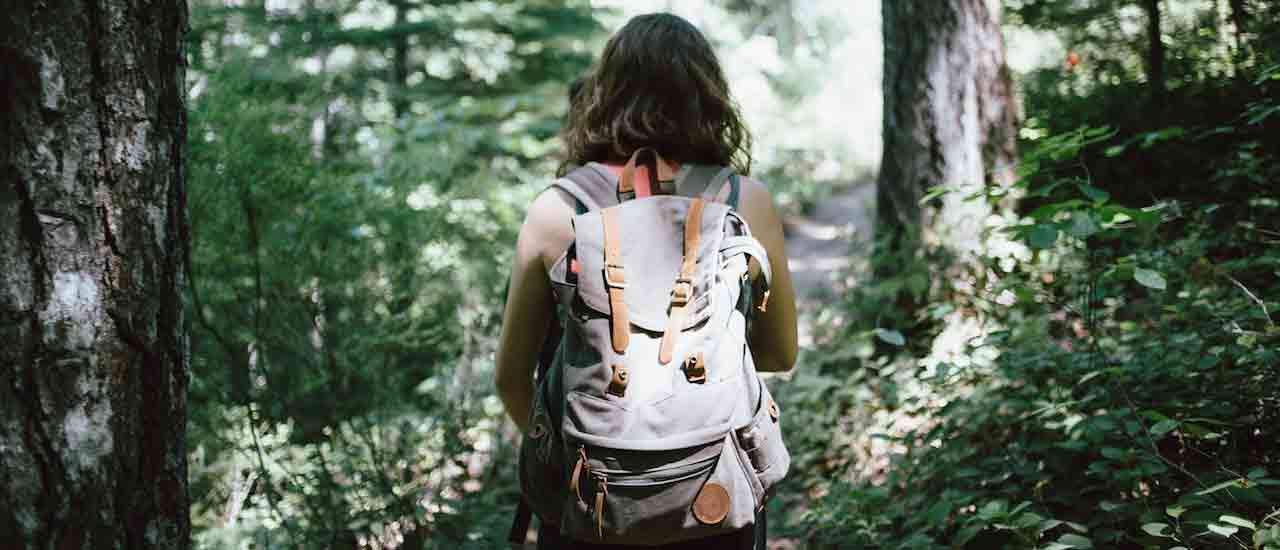If you’ve ever gone to a state or national park, you’ve likely heard the phrase “Leave No Trace”. It’s more than a catchy phrase— it’s perhaps one of the most important mottos for outdoorsy folks to live by. Camping with the seven principles of Leave No Trace ensures that the great outdoors are thriving for everyone to enjoy for years to come.
But what if we applied Leave No Trace principles to our daily lives? Wild outdoor spaces have much to teach us—both when we’re in them and when we leave them to return to real life.
So, let’s dive into Leave No Trace principles, the history behind them, and how you can implement them in your everyday life.
Get Outdoorsy With RVs For Rent Near You
The History of Leave No Trace
After World War II ended, there was an increase in interest and recreational use of our public lands. Highways built up, cars were easier to afford, “camping equipment” became a section at several department stores, and the simplification of tools developed during the war—white gas stoves, lanterns, and polyester—made camping a breeze.
While the American frontier has been fully discovered for decades, most of America lived within cities or on farms. The idea of using the backcountry for recreation was rare. Most who did use them lived there for extended periods, practicing woodcraft, or the art of making permanent changes to the environment to suit individual human needs.
In the 1960s and 1970s, as outdoor recreation started to grow with Generation X, so did the need to protect wild lands from the increase in visitors. The ethics of Leave No Trace were born as guidelines for all outdoor adventurers to hold themselves accountable—in an effort to ensure the natural wonder of the outdoors remains preserved for generations to come.
For the most part, it worked. As hikers ventured deeper into the woods, they were more careful to cover their tracks and keep their impact as light as possible. Today, more people than ever are going outside for their recreation and the ethics of Leave No Trace—taught to the young by the old—are ensuring sustainable growth.
This video from REI is a great explanation of the concept and its principles. But you may wonder if you can apply these concepts beyond the backcountry.
Applying Leave No Trace to Everyday Life
If a shared ethical practice has helped maintain behavior while exploring the outdoors, what if a similar ethic could apply to the rest of our lives?
At the end of an extended camping trip, we all need a hot shower and a comfortable bed. But does this mean we need to hang up the Leave No Trace ethics when we’re not on the trail?
Can we take the principles of Leave No Trace from our weekend spent summiting mountains to our Tuesday morning meeting? Can we carry those same principles with us when we take lunch on the patio or are sitting in traffic?
If Leave No Trace has done wonders for the backcountry, what could it do for our time in the front country?
We like to put up a barrier between where we go hiking and “get away,” and the cities and suburbs where we live the rest of our lives.
This border is arbitrary.
If we did the work to preserve our urban life, how could that impact everything else?
Let’s break down the principles, and start to realize what they could mean for our everyday, urban life.
Plan Ahead and Prepare
The more you are prepared, the less you have to rely on other sources to meet your needs. On a small scale, this means remembering to bring your bags to the grocery store or planning all of your errands, so you only need to make one, efficient trip with your car. On a larger scale, why not think of the cold winter months that are coming and how your home can use less energy to stay warm?
You could also jump into civic meetings to ensure municipal planning suits not only your needs today, but whatever your children might need when they come of age and need access and resources.
Be Considerate of Other Visitors
No one likes a loud neighbor—not at the campsite and certainly not next door to their home. That’s easy. Looking at the larger picture, the idea of a “neighbor” can be expanded to include a significant number of people, companies, and organizations—all impacting one another greatly. The interest of one may not be in the interest of many, or any, others. A corporate interest might not have its neighbors in mind.
Keeping interests in check and ensuring that one’s own needs do not supersede or displacing the needs of others is the solid mindset we all need to ensure a healthy community.
Dispose of Waste Properly
Trash is a part of living in the city; there’s no way around it. A strong windstorm can relocate the contents of a dumpster across backyards and gutters for several blocks. In some places, trash has become so commonplace that residents can easily dismiss it as not being their responsibility. Studies have shown that an abundance of cigarette filters or plastics in a city’s wastewater or drainage system can leach toxins into the water supply and impact the population’s health.
When you’re at home, you may want to go one step further than just sorting your trash or making sure the lid of a dumpster is closed. Instead, consider the packaging of the products that are coming into your home. Getting a new TV can be great, but what happens to the old one? Or with all the cardboard or styrofoam bits that the new one comes packaged in? Plan ahead, think ahead.
Respect Wildlife
For those who live in housing developments that back up to open space, the presence of wildlife is always there. Sometimes pet cats are eaten by coyotes or garbage cans are rifled through by bears. While you may be in your house, there is a chance you’re visiting or infringing on wildlife’s ever-decreasing space. It’s best to live with them, responsibly, to ensure populations are controlled.
Don’t leave food out—intentionally or otherwise—that animals can get into. Use caution when driving to prevent roadkill. Observe and report, but never approach a wild animal.
Leave No Trace, Everyday
There are no exact rules to Leave No Trace. It is a set of ethics, a mentality, a philosophy. Leave No Trace is about knowing the world is not just for you to use and allows the mental space for others to use, enjoy, and get what they need to live and thrive. Adopting this mindset outdoors is one thing; assuming it within your day-to-day life in the city is another.
That’s why we think it’s important for us all to bring these principles from the wilderness into our day-to-day lives.












